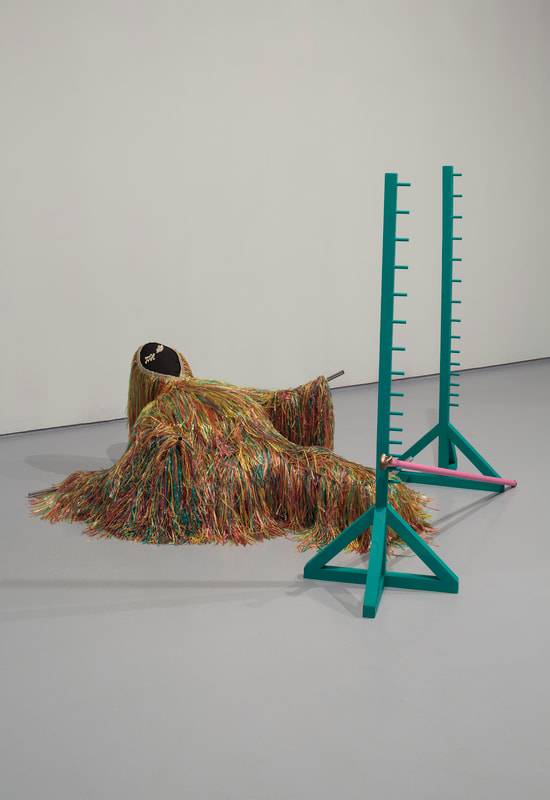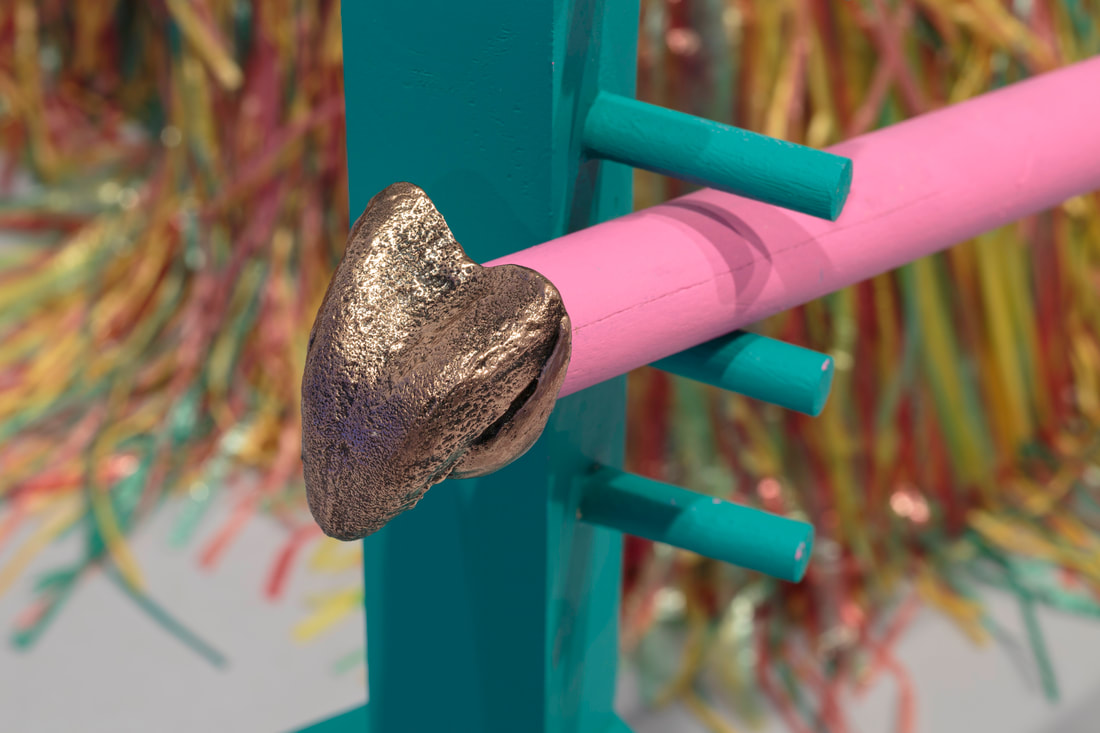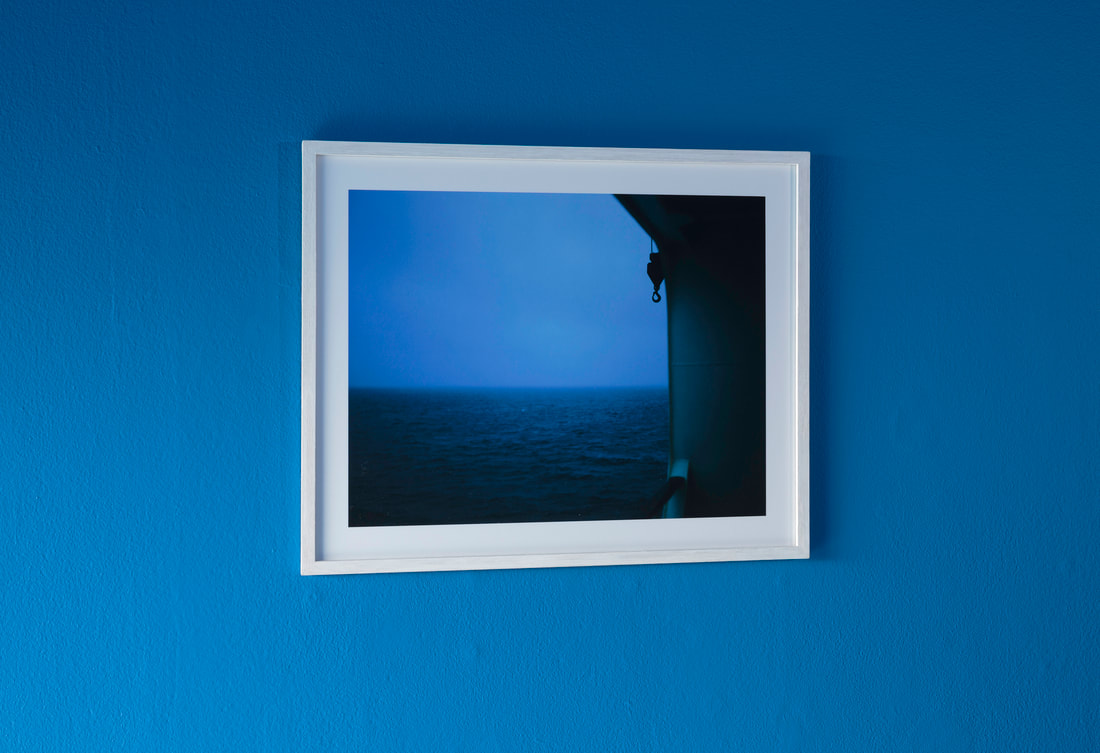How Flexible Can We Make the Mouth
This exhibition marked Barbadian-Scottish artist Alberta Whittle’s first major solo exhibition in a UK institution, drawing together new and recent artworks in film, sculpture, print, installation and performance to reflect on memory, trauma, weather and tensions between the land and sea.
Whittle’s interdisciplinary practice aims to develop a visual, oral and textual language that questions accepted Western constructs of history and society. This work is undertaken with an acute understanding of how formal historical records produced by privileged white men have always sought to replace more ancient and informal ways of comprehending the past. The artist’s wider research questions the authority of postcolonial power, its implications and its legacy.
Whittle’s work often considers conditions in the afterlife of slavery where the racialised black body can become suspended in a state of stress that directly impacts upon physical, mental and emotional health. Within her work, the artist connects these ideas of black oppression with meditations on survival; championing the idea of healing as self-liberation.
How Flexible Can We Make the Mouth refers to Whittle’s current preoccupation with healing, writing, breath and orality. Writing has always been an integral part of her practice and the texts she produces are meant to be read aloud, to be heard as well as seen. She also works rhythmically in relation to writing and reading, particularly looking at punctuation marks as visual signifiers of shifts in breath and breathing. Looking at the relationship between historical written testimonies and ancestral knowledge shared through oral traditions, the artist will be using video and performance to create direct encounters with audiences, encouraging mutual empathy, learning, and understanding.
Whittle’s interdisciplinary practice aims to develop a visual, oral and textual language that questions accepted Western constructs of history and society. This work is undertaken with an acute understanding of how formal historical records produced by privileged white men have always sought to replace more ancient and informal ways of comprehending the past. The artist’s wider research questions the authority of postcolonial power, its implications and its legacy.
Whittle’s work often considers conditions in the afterlife of slavery where the racialised black body can become suspended in a state of stress that directly impacts upon physical, mental and emotional health. Within her work, the artist connects these ideas of black oppression with meditations on survival; championing the idea of healing as self-liberation.
How Flexible Can We Make the Mouth refers to Whittle’s current preoccupation with healing, writing, breath and orality. Writing has always been an integral part of her practice and the texts she produces are meant to be read aloud, to be heard as well as seen. She also works rhythmically in relation to writing and reading, particularly looking at punctuation marks as visual signifiers of shifts in breath and breathing. Looking at the relationship between historical written testimonies and ancestral knowledge shared through oral traditions, the artist will be using video and performance to create direct encounters with audiences, encouraging mutual empathy, learning, and understanding.
Matrix Moves

This installation engages principally with the stereotypes of the Caribbean and the tropical as an exotic playground of pleasure and colour. Drawing on a palate that stems from a Caribbean vernacular rooted in architecture, bright contrasting colours are used as a way of thinking about how things can be obscured through veneer, masquerade and projection -- just as the Caribbean itself has been eroticised, distorted and misrepresented through external western perspectives.
Central to the work is a black figure, performing an impossibly low "Limbo". While intrinsically tied to perceptions of the Caribbean, connoting leisure and pleasure, the routes of this dance floor competition are believed to be much darker. Limbo is believed to have originated in the hellish hulls of slave ships due to the need to bend and contort the body around beams in floors to low to stand -- and sometimes too low even to comfortably kneel.
In this carnival scene, the bar is set impossibly low, and inevitably the bar is down. A failure in a game that was rigged from the start. For all its riotous colour the scene itself and the title "matrix moves" (a named move from Dance Hall culture) point to the immeasurably harder hurdles set for people of colour in making their way through life in our current societal climate.
Not only were the emancipated and their descendants forced into playing a western controlled game in trying to live and survive but they have been forced to play it another language. The cast bronze tongue refers here to the loss of many languages under the pressure to speak the language of the coloniser, the legacy of which is people such as the artist herself who still speak English alone or as a dominant language where they were born.
This installation engages principally with the stereotypes of the Caribbean and the tropical as an exotic playground of pleasure and colour. Drawing on a palate that stems from a Caribbean vernacular rooted in architecture, bright contrasting colours are used as a way of thinking about how things can be obscured through veneer, masquerade and projection -- just as the Caribbean itself has been eroticised, distorted and misrepresented through external western perspectives.
Central to the work is a black figure, performing an impossibly low "Limbo". While intrinsically tied to perceptions of the Caribbean, connoting leisure and pleasure, the routes of this dance floor competition are believed to be much darker. Limbo is believed to have originated in the hellish hulls of slave ships due to the need to bend and contort the body around beams in floors to low to stand -- and sometimes too low even to comfortably kneel.
In this carnival scene, the bar is set impossibly low, and inevitably the bar is down. A failure in a game that was rigged from the start. For all its riotous colour the scene itself and the title "matrix moves" (a named move from Dance Hall culture) point to the immeasurably harder hurdles set for people of colour in making their way through life in our current societal climate.
Not only were the emancipated and their descendants forced into playing a western controlled game in trying to live and survive but they have been forced to play it another language. The cast bronze tongue refers here to the loss of many languages under the pressure to speak the language of the coloniser, the legacy of which is people such as the artist herself who still speak English alone or as a dominant language where they were born.













